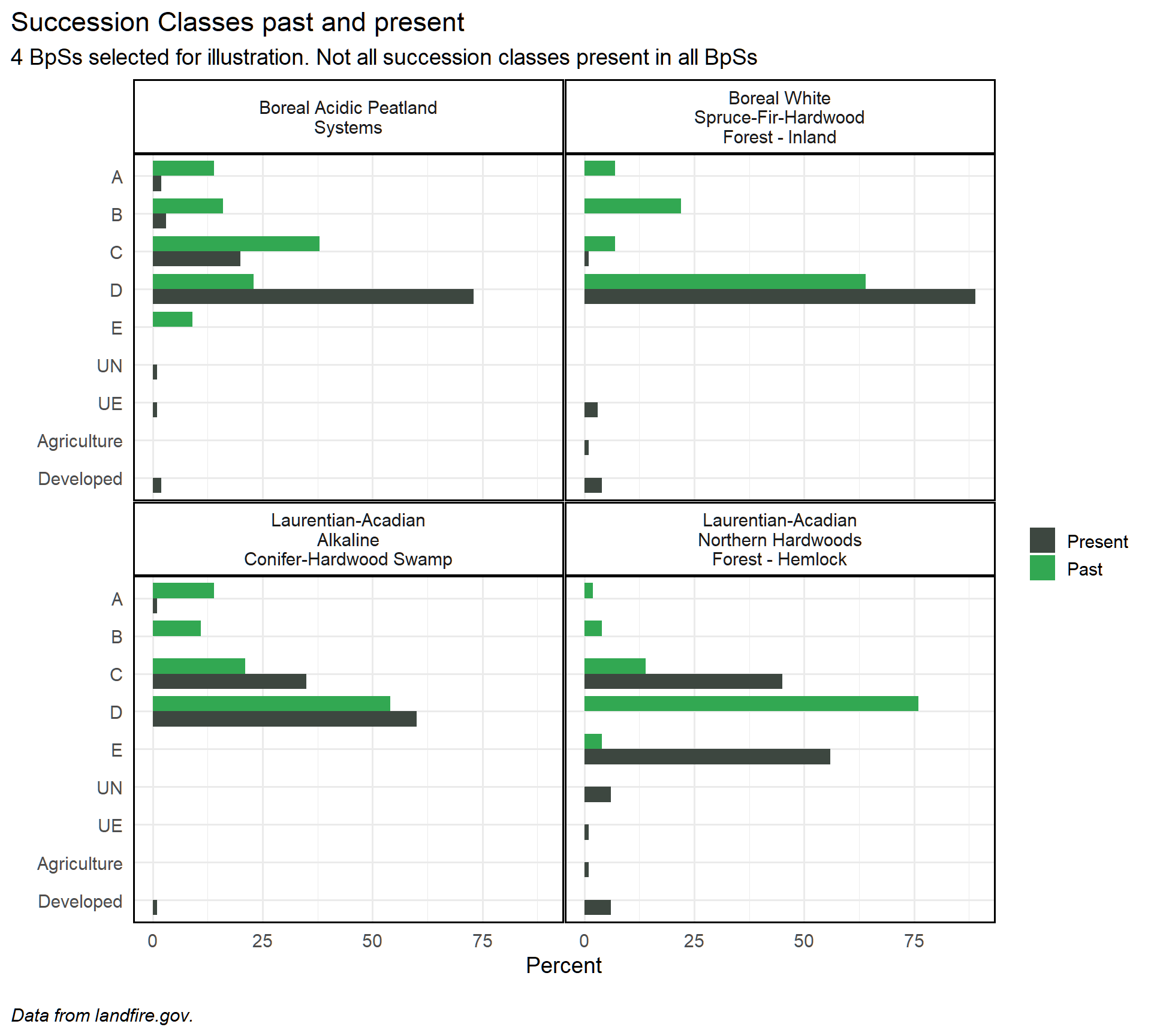
Comparisons
Comparing Past vs. Present Conditions
Using LANDFIRE’s BpS products, we explore two different ways to visualize past vs. current vegetation patterns.
First, we present changes in broad ecosystem types using an interactive comparison diagram. To present these broad ecosystem trends more effectively, we combined classifications of Existing Vegetation Types (EVT) into broader categories.
Second, we compare amounts of succession classes (past and present) for the most prevalent ecosystems.
Summary
There has not been broad whole conversion of ecosystems from one to another (explore circular chord diagram below). However, due to harvests, fire suppression and other management actions (in addition to changes in natural processes) there have been some notable changes in succession classes (see “Succession classes for most dominant Biophysical Settings”) section below:
Perhaps the most interesting broad-scale change is conversion of ‘conifer’ types to ‘hardwood’, presumably due to fire suppression.
These differences may or may not be ‘real’ on the ground and/or may not be a management priority.
Note: number presented when hovering equals acres.
Succession classes for most dominant Biophysical Settings
Some ecosystems have sizable over/under-representation of succession classes on the landscape today compared to modeled historic. For example:
- There is a substantial ‘over-representation’ of succession class D in the Boreal Acid Peatland.
- LANDFIRE mapped almost total lack of succession classes A, B and C with the Boreal White Spruce-Fir-Hardwood-Inland ecosystem.
- As is seen in most northern hardwood forests the late-closed succession class D was dominant historically, and way under-represented on the landscape today.